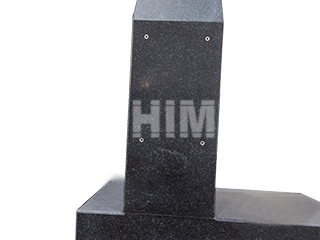When it comes to precision measurement and metrology equipment, stability and accuracy are everything. One of the key mechanical properties that defines a granite surface plate’s performance is its Elastic Modulus — a measure directly related to the material’s ability to resist deformation under load.
What Is Elastic Modulus?
The Elastic Modulus (also known as Young’s Modulus) describes how stiff a material is. It measures the relationship between stress (force per unit area) and strain (deformation) within the material’s elastic range. In simple terms, the higher the elastic modulus, the less a material deforms when a load is applied.
For example, when a granite surface plate supports a heavy measuring instrument, a higher elastic modulus ensures that the plate maintains its flatness and dimensional stability — critical factors for maintaining reliable measurement accuracy.
Granite vs. Other Materials
Compared to materials like marble, cast iron, or polymer concrete, ZHHIMG® black granite has an exceptionally high elastic modulus, typically ranging from 50–60 GPa, depending on the mineral composition and density. This means it resists bending or warping even under significant mechanical loads, making it ideal for high-precision platforms and machine bases.
In contrast, materials with a lower elastic modulus are more prone to elastic deformation, which can result in subtle but critical measurement errors in ultra-precision applications.
Why Elastic Modulus Matters in Precision Granite
A granite surface plate’s resistance to deformation determines how accurately it can serve as a reference plane.
-
A high elastic modulus ensures excellent rigidity, reducing the risk of micro-deformation under point loads.
-
It also helps maintain long-term flatness, especially in large-format platforms used for CNC machines, coordinate measuring machines (CMMs), and semiconductor inspection systems.
-
Combined with granite’s low thermal expansion and excellent damping properties, this results in superior dimensional stability over time.
ZHHIMG® Precision Advantage
At ZHHIMG®, all precision granite platforms are made from high-density ZHHIMG® black granite (≈3100 kg/m³), offering superior stiffness and long-term stability. Each surface plate is finely lapped by experienced technicians — some with over 30 years of hand-grinding expertise — to achieve sub-micron flatness accuracy. Our production process follows DIN 876, ASME B89, and GB standards, ensuring every product meets or exceeds international metrology requirements.
Conclusion
The elastic modulus is not just a technical parameter — it’s a defining factor for the reliability of precision granite components. A higher modulus means greater stiffness, better deformation resistance, and ultimately, higher measurement accuracy.
That’s why ZHHIMG® granite surface plates are trusted by leading global manufacturers and metrology institutes for applications where precision cannot be compromised.
Post time: Oct-11-2025

